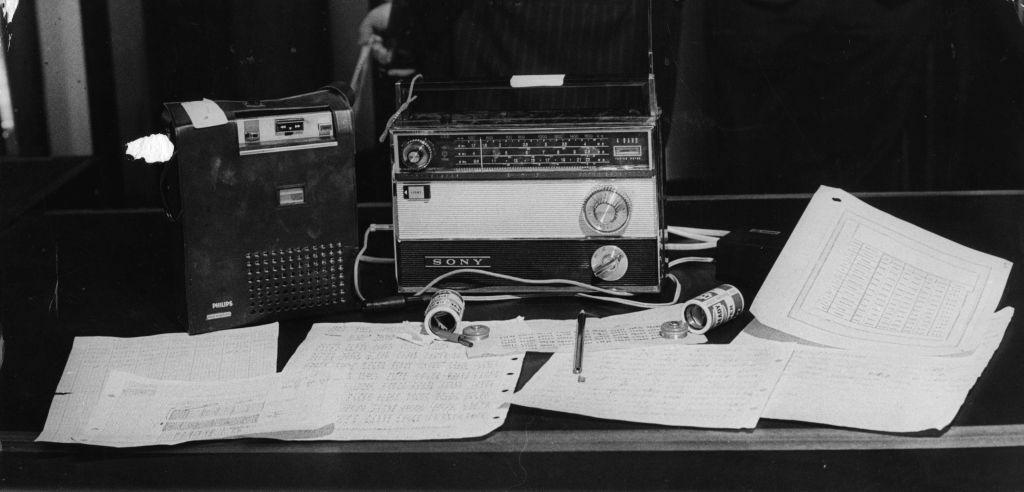Aeschylus is credited first for the time-worn aphorism that in war, truth is the first casualty. But in the next major conflict, truth could find itself joined by virtually all information.
As a society at war, we face becoming blind, deaf and dumb once the balloon goes up. Britain and most western countries have put all their eggs in one large basket: that of digital communications. In a time of global conflict, this could be a risky and painful prospect.
The rise of digital communications has been a boon but has also opened society to grave risks through cyber war. Ukraine found this out in the first years of its war with Russia. Just as worrying has been the penetration of television, the internet and streaming radio by hacker groups, both military and criminal. Attempts to change the narrative of society and sow discord through fake news and false information, denial-of-service attacks and interference with GPS signals have all been a serious challenge in the ongoing war. Ukraine has hit back with its own hacktivist networks, even disrupting Moscow television stations, and the cyber war continues.
Last year, in the United States, the FBI revealed the existence of a massive penetration of American telecommunications networks by China, conducted by a threat group dubbed ‘Volt Typhoon’. It had taken vast amounts of data about Americans, including text messages, and perhaps inserted malware into networks. This complex cyber-attack against routers and switching networks could have been ongoing for years. More recently, the spate of sabotage against data cables on the floor of the Baltic sea, involving Russian-linked or Chinese vessels, has raised alarm about communications and internet vulnerabilities for Nato allies.
If a major regional or global war erupts, UK power networks could be struck hard and cellular communications compromised as network providers and utilities are hit by cyberattacks and even physical strikes. Satellite links too might come under attack and face disruption. All streaming services, including television and radio, could be interrupted, mobile phones may lose signal, and if the electrical grid is hit, issues recharging your phone battery might make the last point moot.
The evolving UK Emergency Services Network for first responders is based on a BT/EE-run cellular network using 4G and some 900 masts dotted throughout the country. Even with cyber firewalls, the system could still have reliability issues during wartime, and is not likely to replace the existing 4G Airwave system until 2029. First responders might be able to communicate with one another, but how will the general public be kept informed?
It’s not all doom and gloom, however: global conflict can spark innovation. During the second world war, Britain developed civilian and military communications networks superseding copper landlines and vulnerable deep-sea cables. The new technologies were largely jam-proof and allowed secure voice and data to be transmitted across Britain and the world. Radio telegraphy and shortwave radio became the mainstays of British wartime communication methods. In battle, newly harnessed Very High Frequency (VHF) radio helped the RAF defeat the Luftwaffe by allowing reliable, rapid communications between fighters and ground stations. Moreover, the enemy could not jam shortwave or mediumwave broadcasts in Britain, meaning the population could be kept informed. Mobile transmitters were deployed along with fixed stations, and an immense national effort on the production of radio equipment and components at the strategic level was initiated, ramping up as the war progressed.
Might it be time to bring shortwave out of retirement? The BBC continues to broadcast on shortwave to Africa, Asia and the Middle East, but budgets and audiences have declined markedly over the years. Updated with the latest tech innovation, Digital Radio Mondiale (DRM) sound quality and compression are hugely improved, eliminating the snap, crackle and pop. There is just one UK-based shortwave transmitter remaining in operation, at Woofferton in Shropshire, which was built during the second world war. But China (and, to a lesser extent, Russia) has invested heavily in shortwave broadcasting for both domestic and international reach, with many transmitters spread across the country. Even tiny Vanuatu in the Pacific has recently decided to use shortwave broadcasting as the basis of its emergency response network in times of natural disaster.
True, it’s retro-analogue, but shortwave gets through to people where more sophisticated digital communications fail. Perhaps it’s time Britain doubled down on ensuring national resilience and took another look at radio. A fleet of analogue, mobile transmitting stations could be a good investment if Britain finds itself at war and under a sustained information attack – an attack which could make hitherto service outages look like a minor inconvenience on an otherwise sunny day. And maybe the public should start digging out those old hand-cranked shortwave receivers and pocket radios again – or better yet, buying new ones, though the vast majority are now made in China.







Comments